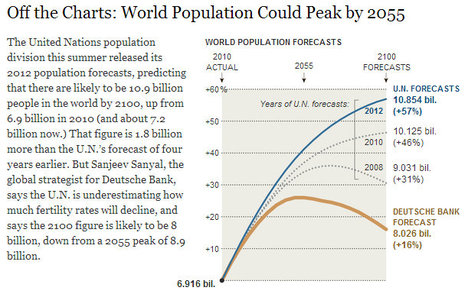 Source of graph: online version of the NYT article quoted and cited below.
Source of graph: online version of the NYT article quoted and cited below.
(p. B3) An analysis of population trends by Sanjeev Sanyal, the global strategist for Deutsche Bank, concludes that population growth is likely to be much slower than the U.N.’s estimate.
“In our view, global fertility will fall to the replacement rate in less than 15 years,” Mr. Sanyal wrote. “Population may keep growing for a few more decades from rising longevity but, reproductively speaking, our species will no longer be expanding.” He forecasts that world population will peak in around 2055, at 8.7 billion, and decline to 8 billion by the end of the century.
The fertility replacement rate — the number of children per woman needed to keep the population level over time — is usually considered to be 2.1. Mr. Sanyal says that in the developing world, it is higher, because of higher infant mortality and maternal death in childbirth. For the world as a whole, he thinks the current replacement rate is about 2.27, a figure that will come down gradually over time.
The spread between the latest U.N. forecast and Deutsche Bank’s for 2100 — 2.8 billion people — is greater than the entire population of the world in 1955.
For the full story, see:
FLOYD NORRIS. “Population Growth Forecast From the U.N. May Be Too High.” The New York Times (Sat., September 21, 2013): B3.
(Note: the online version of the story has the date September 20, 2013.)
